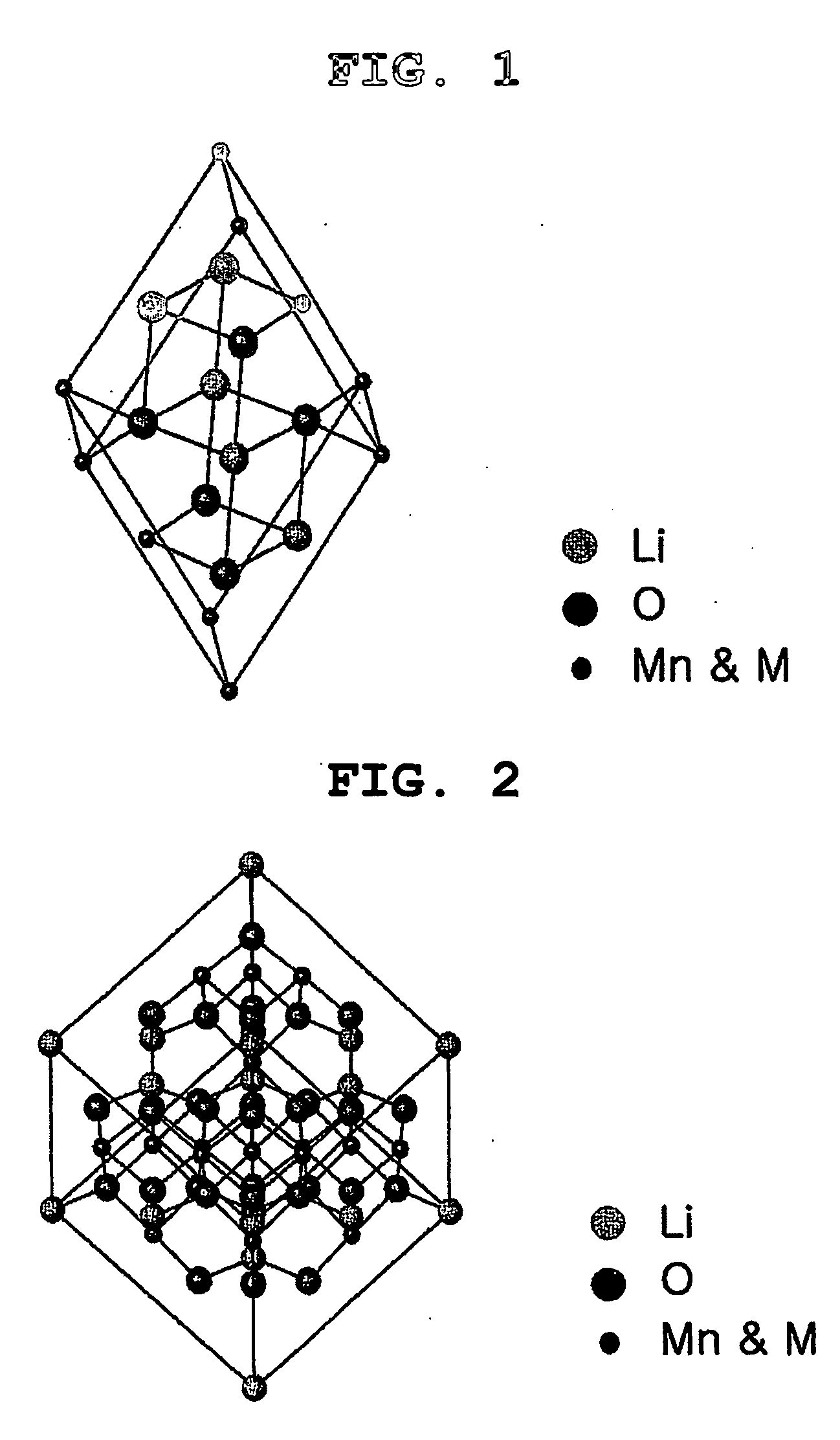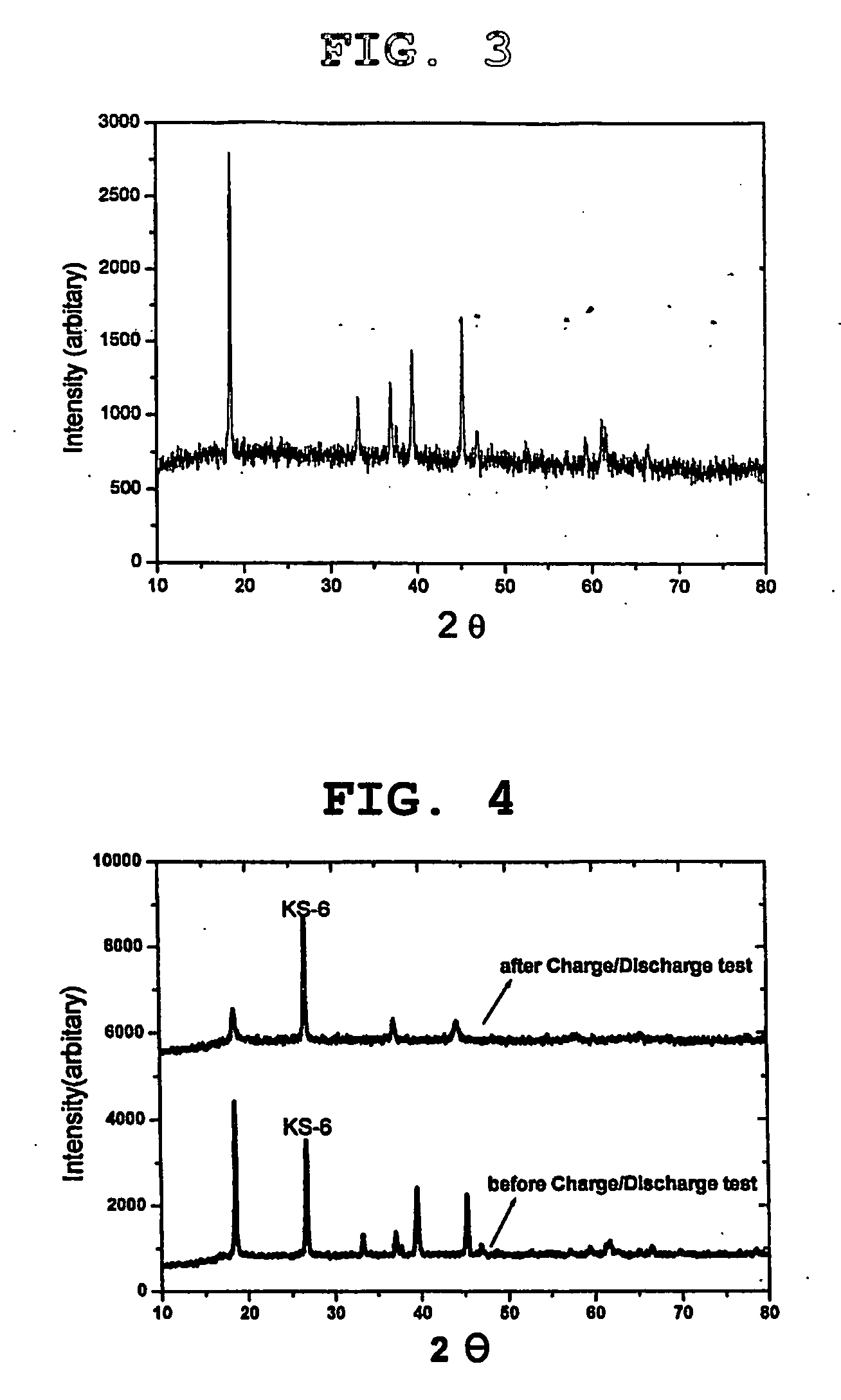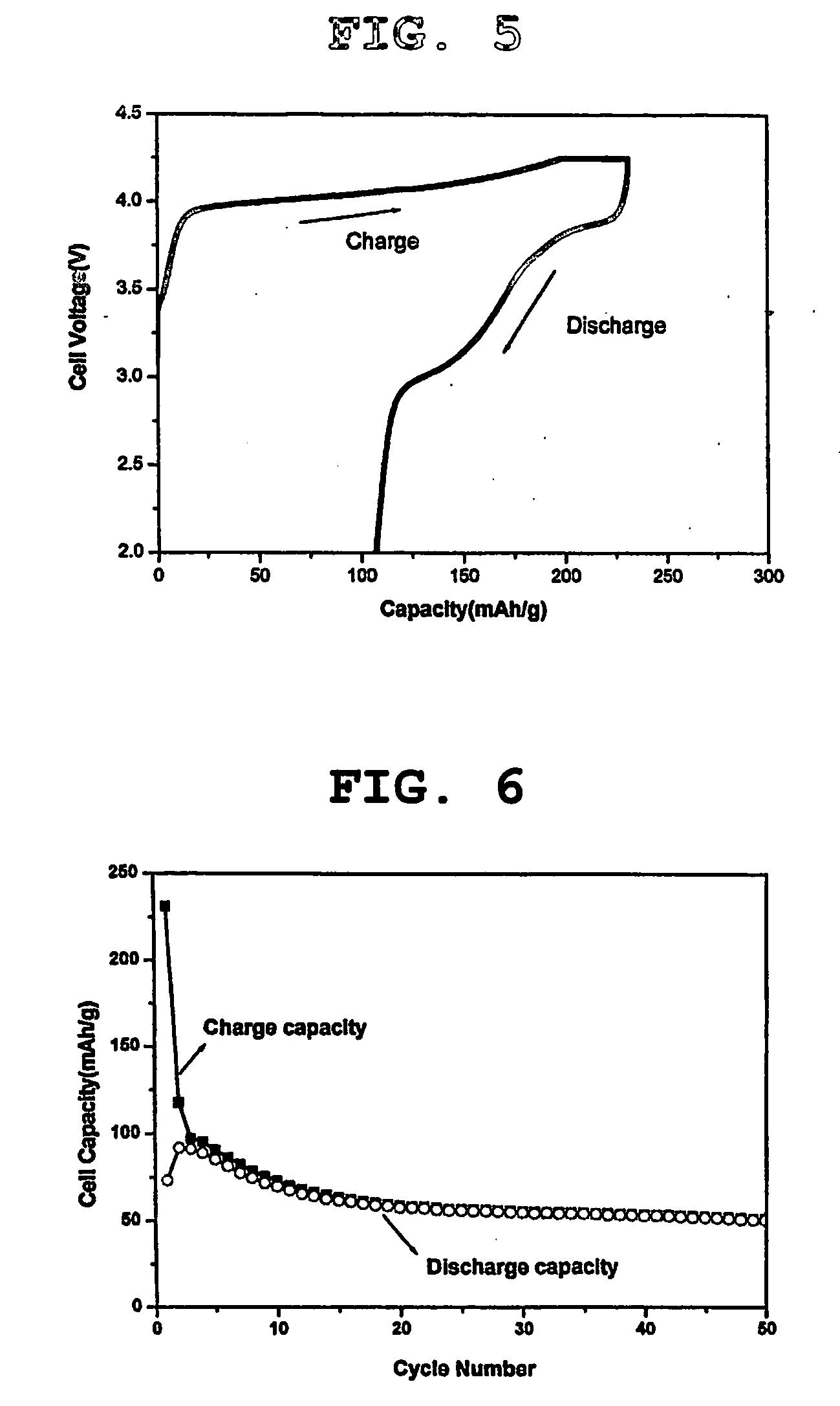Cathode active material comprising additive for improving overdischarge-performance and lithium secondary battery using the same
a lithium secondary battery and active material technology, applied in the field can solve the problems of reducing the capacity affecting the performance of lithium secondary batteries, so as to achieve the effect of not significantly reducing the cell capacity
- Summary
- Abstract
- Description
- Claims
- Application Information
AI Technical Summary
Benefits of technology
Problems solved by technology
Method used
Image
Examples
example 1
[0049] A pouch-type polymer cell of 383562 size was manufactured by a conventional method.
[0050] LiCoO2 was used as a cathode active material and LiCr0.1Mn0.9O2 was added in the amount of 8 parts by weight based on 100 parts by weight of the cathode active material.
[0051] LiCr0.1Mn0.9O2 was prepared by mixing lithium carbonate, manganese oxide and chrome oxide in solid phases, heat-treating the mixture at a temperature of 1000° C. under argon atmosphere for 12 hours, pulverizing the heat-treated mixture and further heat-treating the pulverized mixture at a temperature of 1100° C. under argon atmosphere for 12 hours.
[0052] Additionally, Super-p and PVDF polymer, used as a conductive agent and a binder, respectively, were added to NMP as a solvent to form cathode mixture slurry, and then the slurry was coated on an Al collector to obtain a cathode. On the other hand, artificial graphite and copper were used as an anode active material and an anode collector, respectively, and an EC...
experimental example 1
[0054]FIG. 3 is a graph showing the result of a structural analysis of the lithium manganese oxide, LiCr0.1Mn0.9O2, used as an additive for a cathode active material in Example 1 by X-ray diffraction. According to FIG. 3, it is apparent that the lithium manganese oxide of formula 1 is a compound having a layered structure.
[0055] On the other hand, as shown in FIG. 4, the lithium manganese oxide having a layered structure, LiCr0.1Mn0.9O2, was structurally changed into a spinel structure, after a coin-type cell obtained by using the same compound as an additive for a cathode active material experienced initial charge / discharge.
[0056] Additionally, as demonstrated in FIG. 5 showing the first charge / discharge capacity of a coin-type cell obtained by using the lithium manganese oxide of formula 1 having a layered structure as an additive for a cathode active material, the cell provided a very low first charge / discharge efficiency. As demonstrated in FIG. 6 showing the charge capacity a...
experimental example 2
[0057] A charge capacity and a discharge capacity before and after an over-discharge test were determined using each of the pouch-type polymer cells of 383562 size obtained from Example 1 and Comparative Example 1, through a conventional method. The over-discharge test results are shown in FIG. 8. Each of the numbers means a discharge capacity restorability at 0.2C and 1C after over-discharge, based on a discharge capacity at 0.2 C and 1 C before over-discharge. As shown in FIG. 8, Example 1 according to the present invention provided a discharge capacity restorability of 90% or more after an over-discharge test, and thus provided an excellent over-discharge preventing effect compared to Comparative Example 1.
PUM
 Login to View More
Login to View More Abstract
Description
Claims
Application Information
 Login to View More
Login to View More - R&D
- Intellectual Property
- Life Sciences
- Materials
- Tech Scout
- Unparalleled Data Quality
- Higher Quality Content
- 60% Fewer Hallucinations
Browse by: Latest US Patents, China's latest patents, Technical Efficacy Thesaurus, Application Domain, Technology Topic, Popular Technical Reports.
© 2025 PatSnap. All rights reserved.Legal|Privacy policy|Modern Slavery Act Transparency Statement|Sitemap|About US| Contact US: help@patsnap.com



